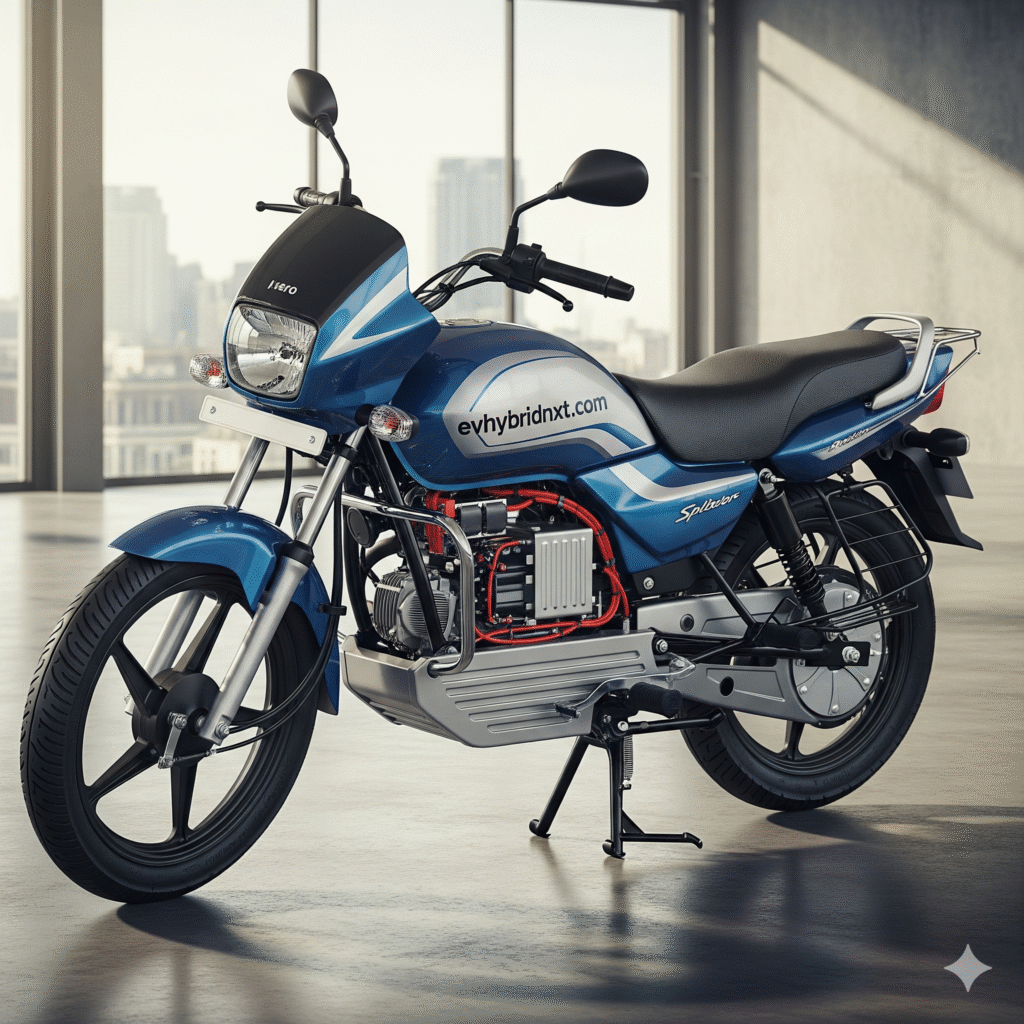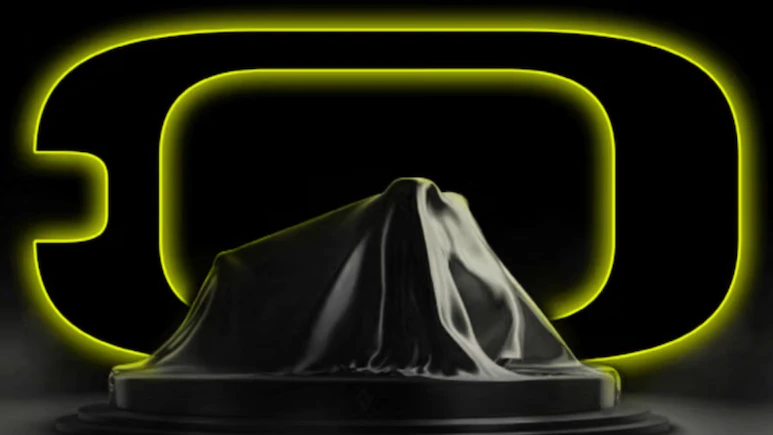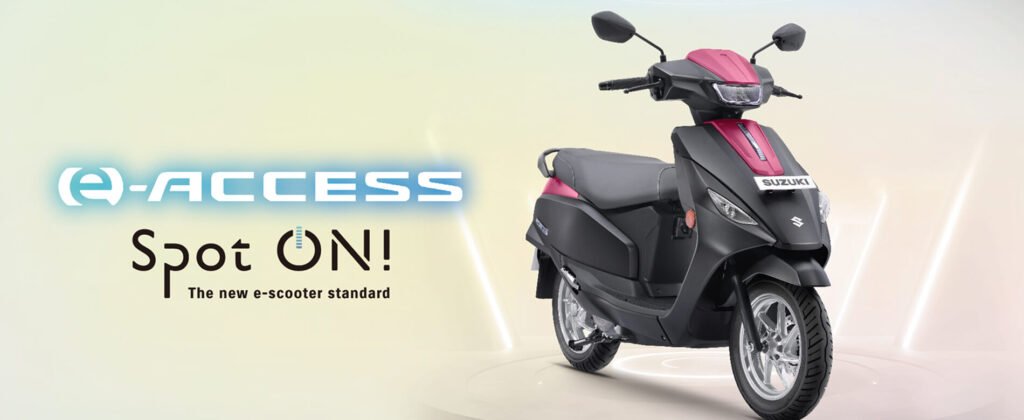In a significant push towards sustainable mobility, Hero MotoCorp, the world’s largest two-wheeler manufacturer, is gearing up to electrify one of its most beloved models: the Splendor. The Hero Splendor Electric, internally codenamed AEDA, is currently under development and is expected to hit the roads around 2027. While Hero has not officially confirmed the launch date, industry sources and reports from credible outlets like BikeDekho and Autocar India indicate that this mass-market electric bike could revolutionize urban commuting in India by blending the Splendor’s legendary reliability with zero-emission technology.
As India’s electric vehicle (EV) adoption accelerates, driven by government incentives and rising fuel costs, the Splendor Electric represents Hero’s bold strategy to capture the entry-level EV market and achieve ambitious sales targets.
The Hero Splendor has been a cornerstone of Indian mobility since its debut in 1994, dominating the 100cc commuter segment with over 100 million units sold worldwide. Known for its fuel efficiency, low maintenance, and affordability, the Splendor has become synonymous with everyday reliability for millions of Indian riders, from daily commuters to small business owners. Priced starting around Rs 75,000 for its ICE (internal combustion engine) variants, it has consistently topped sales charts, accounting for a significant portion of Hero’s annual volumes.Transitioning this icon to an electric platform is no small feat. The AEDA project, as it’s known internally, has been in development for nearly two years at Hero’s Centre for Innovation and Technology (CIT) in Jaipur.
Sources suggest the electric version will retain the Splendor’s compact, practical design while incorporating EV-specific enhancements like a swappable or fixed battery pack, potentially offering a range suitable for urban commutes of 80-100 km per charge. Although detailed specifications remain under wraps, the bike is expected to feature a hub-mounted electric motor delivering torque equivalent to its petrol counterpart, ensuring the familiar punchy acceleration that riders love, but with silent, vibration-free operation.Hero’s focus on the mass-market segment positions the Splendor Electric as a game-changer. Unlike premium EVs, this model aims to be accessible, with an estimated price point under Rs 1 lakh (ex-showroom), making it competitive against rivals like the Bajaj Platina Electric or TVS iQube in the scooter space.
The development emphasizes affordability and usability, targeting the vast commuter and daily business user base that has long relied on the Splendor for its durability in India’s diverse road conditions.
The Splendor Electric is just one piece of Hero MotoCorp’s expansive electrification strategy. Reports indicate the company plans to introduce half a dozen new EV models over the next 2-3 years, spanning entry-level scooters, dirt bikes, and high-performance motorcycles.
By 2027-28, Hero aims to sell over 500,000 electric two-wheelers annually, with electric motorcycles alone contributing around 2.5 lakh units – 2 lakh from the Splendor Electric and the rest from other projects.
Complementing AEDA, Hero is developing the Vida Lynx, an electric dirt bike slated for 2026 with a targeted volume of 10,000 units, primarily for international markets.
Additionally, under Project ADZA, two premium electric motorcycles equivalent to 150cc and 250cc ICE bikes are in the works, catering to younger riders seeking style and performance.
There’s also the Acro, a learner electric dirt bike for kids, recently patented in India. This multi-pronged approach underscores Hero’s commitment to diversifying its EV portfolio, from budget commuters to adventure-oriented models, in partnership with global players like Zero Motorcycles for advanced tech integration.The AEDA project’s emphasis on high-volume production – eyeing nearly 2 lakh units per year – highlights its role as Hero’s flagship mass-market EV.
Development at the Jaipur CIT focuses on cost-effective battery solutions, fast charging capabilities, and robust build quality to withstand India’s challenging infrastructure, including potholed roads and extreme weather.
Social media and automotive forums are abuzz with anticipation for the Splendor Electric. On platforms like X (formerly Twitter), enthusiasts are speculating about features like regenerative braking, LED lighting, and digital instrumentation, drawing parallels to the ICE Splendor’s i3S idle start-stop tech. “Finally, an affordable electric Splendor – this could be the EV that takes India green!” one user posted, reflecting the widespread excitement. Industry analysts predict it could capture a significant share of the growing Indian EV two-wheeler market, projected to reach 10 million units annually by 2030, fueled by subsidies under schemes like FAME III.
However, challenges remain. Hero must navigate battery supply chain issues, ensure competitive pricing amid rising raw material costs, and build a robust charging network. The lack of an official launch date adds intrigue, but sources consistently point to 2027 as the timeline, aligning with Hero’s goal to ramp up EV production.



